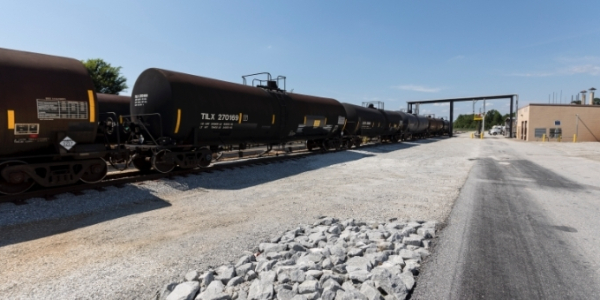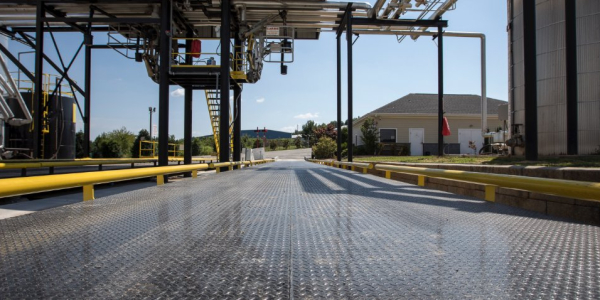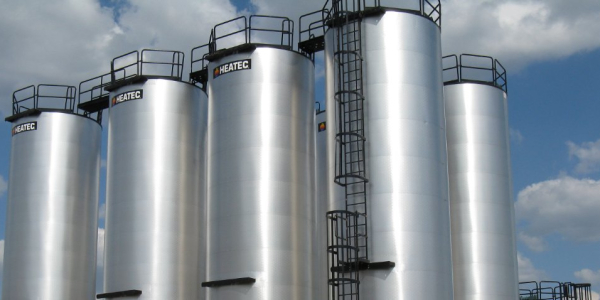ASPHALT EMULSIONS
Asphalt Emulsions are a combination of Asphalt Cement (AC), water and surfactants (soap solution), combined through a high shear process whereby the AC or the oil and the water are combined with the surfactant to produce a homogenous mixture. Some of the uses of Asphalt Emulsions are:
Surface Treatments
Fog Seal
A fog seal is a light spray application typically of a diluted asphalt emulsion performed with a liquid distributor. Fog seals are meant to be used on pavements typically with low traffic and in reasonably good condition. Fog seals provide a cost-effective pavement preservation option and are used primarily to seal existing asphalt surfaces to reduce raveling, enrich dry and weathered surfaces, and provide a barrier to further surface deterioration due to the weather elements.
Chip Seal
A chip seal is a pavement preservation process that consists of a layer(s) of emulsified asphalt combined with layer(s) of aggregate embedded into the emulsion. The most typical chip seal is a single seal, with one layer of emulsion and 1 layer of aggregate, however double and triple seals are common depending on the pavement condition. Chip seals provide a new skid resistant wearing surface that stops raveling, seals minor cracks and provides resistance to further road surface deterioration due to oxidation and raveling.
Micro-Surfacing
Micro-surfacing is a pavement preservation process utilizing a mixture of polymer-modified asphalt emulsion, crushed aggregate, water, and other additives, properly proportioned and spread over a prepared surface utilizing specialized equipment. The special-purpose polymers and additives used in micro-surfacing allow multiple stone thickness applications for projects such as rut filling and highway leveling/resurfacing.
Some of the benefits of Micro-Surfacing:
- Improves Safety — As pavements wear down over time, they become slick, especially around curves. The aggregate mix in micro-surfacing restores surface quality and improves skid resistance helping to dramatically reduce accident rates.
- Seals and Reduces Pavement Oxidation — Asphalt oxidation causes major changes to binder properties and is a major contributor to age-related pavement failure such as fatigue cracking. The additional 3/8″ surface provided by micro-surfacing adds a new, protective layer to the pavement.
- Corrects Rutting Issues — Micro-surfacing can also be used to fill wheel-path ruts. A special rut-fill box is used to fill one rut at a time, up to about two inches in depth. This is a cost-effective alternative to expensive pavement milling and hot mix inlay.
- Quick Construction — One hour after the micro-surfacing treatment has been applied, it’s ready for traffic and gives the appearance of an all-new surface.
- Installation Anytime — Day or night, micro-surfacing is a process that can be performed on high, medium, or low volume roadways without causing extensive construction delays.
Slurry Seal
Slurry seal is a pavement preservation process utilizing a mixture of asphalt emulsion, crushed aggregate, water, and other additives, properly proportioned and spread over a prepared surface unitizing specialized equipment. Slurry seal is used to extend the life of asphalt pavements that are in reasonably good condition. The benefits of Slurry Seal are improved skid resistance, improved moisture intrusion, uniform black appearance, and the prevention of oxidation and raveling of the existing pavement.
Cape Seal
Cape Seal is a multi-layered pavement preservation treatment consisting of a chip seal covered by a layer of Slurry Seal or Micro-surfacing. Cape Seals are designed to be used on pavements in fair to good condition. Cape Seals provide the benefits of both a Chip Seal and a Slurry Seal or Micro-surfacing by sealing moderate cracks, improving skid resistance, and sealing and protecting the pavement surface from moisture damage and further oxidation.
Recycling Emulsions
Cold in Place Recycling (CIR)
Cold-in-Place (CIR) recycling is a method of removing and reusing the existing asphalt surface. It involves grinding milling off the top 2 to 5 inches of the existing asphalt surface and mixing the crushed asphalt typically with an asphalt emulsion recycling agent, and placing the mixed material back down with a paver.
The cold-in-place process is typically performed using a “train” of equipment which includes an emulsion tanker, milling machine, sometimes a crusher and a screening unit, and an asphalt paver and a combination of pneumatic and vibratory rollers.
The milling depth is determined largely on the existing depth of the asphalt material. Only the asphalt layer is to be milled in this process.
Cold-in-place recycling is used to restore and reuse the existing material reducing the amount of outside material required to be hauled to the site. This efficiently improves the road surface and strength while minimizing expenses typically incurred during the paving process. In addition, CIP can correct deep asphalt defects such as rutting, fatigue (alligator) cracking, and utility cuts that cannot be addressed by a surface treatment or an overlay, and allows minor corrections to the profile of a road surface, reduces reflective cracking and results in a minor inconvenience to traffic. As its name implies, this is a cold process that requires minimal additional heat during the rejuvenation of the asphalt material, resulting in a decrease in the amount of energy required to produce the final material.
Full Depth Reclamation (FDR)
Full Depth Reclamation (FDR) is a rehabilitation process in which the full thickness of the asphalt pavement and a predetermined portion of the underlying materials (base, subbase and/or subgrade) is uniformly pulverized and blended to provide an upgraded, homogenous base material. Treatment depths vary depending on the thickness of the existing pavement structure, but generally range between 4-12 inches.
FDR consists of pulverization /reclamation of the existing materials, adding more materials(when necessary), mixing, initial shaping of the resultant mix, compaction, final shaping, and the application of a bituminous surface or wearing course.
Reclamation of the existing asphalt bound layers with the underlying materials produces a “granular” pavement layer which can be used as is, can have additional granular materials placed over it, or can be enhanced with the addition of an additive or “stabilizing additive.” The addition of a stabilizing additive is usually required if the reclaimed material does not, by itself, have the necessary mechanical properties and/or structural strength to support the anticipated loads.
Prime & Tack Coats
Emulsion Prime
Emulsion Prime is a road construction product that is applied to the upper portion of a granular base of a new Roadway. The prime is applied with a liquid asphalt distributor truck. It is used in preparation for the initial asphalt Hot Mix layer or a chip seal and it’s primary purpose is to protect the new base material from weather and traffic damage prior to paving and the prime also promotes a strong bond between the base and the other surface layers.
- EAP-Special
- AEP
Emulsified Tack Coat
A tack coat is a think layer of asphalt emulsion applied between Hot Mix Asphalt (HMA) lifts to promote bonding. Adequate bonding between the HMA lifts is critical in order for the completed pavement structure to behave as a single united structure and produce adequate strength. Inadequate bonding between HMA layers can result in delamination or debonding and can greatly reduce the life of the pavement.
DOT Qualified Listings:
- HFMS-1
- HFMS-1H
- CRS-1
- CRS-2
- CRS-2H
At Southeast, we make the products that make your process better.
LIQUID ASPHALT
Asphalt (sometimes called “liquid asphalt”, “asphalt cement” or “asphalt binder”) is a sticky, black and highly viscous liquid or semi-solid form of petroleum. Performance Grade (PG) Bitumen is liquid asphalt that is graded based on its performance at different temperatures in Celsius. It may be found in natural deposits or may be a refined petroleum product. Asphalt occurs naturally in a few places in the world, but most of the asphalt used today for paving comes from petroleum crude oil. Asphalt is the heaviest part of the crude—what’s left after all the volatile, light fractions are distilled off for products such as gasoline. Refined asphalt is graded for specific engineering properties and can be liquefied in three ways:
- Asphalt Cement is a solid at ambient temperature and a liquid at temperatures typically above 250°F.
- By blending it with a light petroleum solvent (known as “cutback asphalt” or “cutback”)
- By suspending it in water through the emulsification process (known as “emulsified asphalt” or “asphalt emulsion”)
Paving Grade
Performance Grade (PG) asphalt binders are typically available as either polymer modified or non-modified. Examples of non modified PG binders are: 46-34, 58-22, 58-28, 64-22, 67-22. Examples of polymer modified PG binders are: 64-28, 70-22, 70-28, 76-22, 76-28, 82-22, 82-28. Depending on your local specifications, some grades shown as polymer modified may meet the specifications without polymer modification. Check with your local supplier for more information.
Industrial Asphalts
Industrial asphalts are products that are used in non-paving applications. Some examples of Industrials are coatings for cast pipe, automobile and durable good coatings, sealants and sound dampeners, roofing products and coatings and adhesive backing for insulation to name a few.







